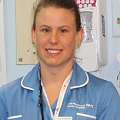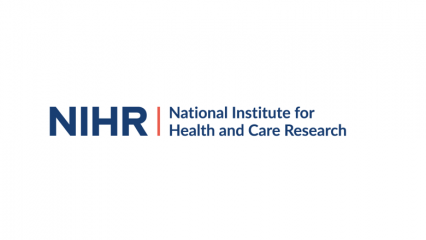24 HOURS in EMERGING
Note that the personal descriptions of patients within this blog are fictional, although the patient interactions and activities reflect a real-life 24 hours in EMERGING.
The EMERGING research team is a collaboration between the adult critical care and the adult emergency departments here at Central Manchester University Hospitals NHS Foundation Trust (CMFT). Our mission is to continually strive to improve standards of emergency and intensive care through research. We aim to give as many patients as possible the opportunity to take part in research, however, in a busy and unpredictable environment this is not without challenges and for this reason, the way we conduct our research is quite unique.
08:00 – The team arrive at work. Typically, members of the team work shifts between Monday to Friday, 8am–8pm. There has to be flexibility as it’s impossible to predict when a patient will arrive at the Emergency Department (ED) or the Intensive Care Unit (ICU).
Coffee on the boil, tea bags in cups and desktop computers loading up to begin screening for patients.
Screening is the term we use for identifying patients who may meet the eligibility criteria of a research study. It could be that suitable patients have been admitted overnight.
A research nurse diligently observes what’s happening on the ED and the ICU throughout the day to identify patients who are being admitted with conditions we are currently researching. In the ED, we’re currently recruiting into studies into Heart Failure (Relax-2), Novel Psychoactive Substance (legal high) use (IONA), Sepsis (ART-123) and Gastro-Intestinal bleeding (HALT-IT).
Next on to the Intensive Care Unit (ICU), where we are currently offering studies to patients who have been admitted with Sepsis (ART-123) and Acute Respiratory Distress Syndrome (ARDS, REST and Catapult). Has anyone got a raised white cell count? Are they septic? Could they be developing a Ventilator Acquired Pneumonia (VAP) and be eligible for our VAP Rapid-2 or BRAVO research studies.
08:45 – The doorbell sounds; a student nurse from the NIHR / Wellcome Trust Manchester Clinical Research Facility arrives to spend a practice placement with the EMERGING team to gain insight into research delivery in the ED and ICU. The student nurse is welcomed to the team, given an orientation pack and shadows a member of the team for the rest of their shift. She enjoys real-time, real-life exposure to the delivery of clinical research in both ED and ICU.
Next, an EMERGING nurse visits the ED to remind clinical staff about the research studies we are delivering and how to alert us to potentially eligible patients. The ED/ICU is unpredictable and fast paced, so our close working relationship with the clinical teams in the ED and ICD is essential.
We do our best to embed research as part of clinical practice, by assisting the clinical nurses with patient re-positioning personal care, checking due medications and assisting with care procedures such as ventilator weaning and extubation.
09:00 – A young male is approached on the Acute Medical Unit (AMU) after consuming a Novel Psychoactive Substance. The patient was identified the day before in the ED and the clinical team has just informed us that he is now well enough to consider taking part in research. When we go to see him, to explain more about the study, he is asleep, so we make a note to come back later, and use the time to brief clinical staff about the other research studies we currently have available.
The IONA research study aims to identify and characterise the clinical toxicology of Novel Psychoactive Substances (legal highs) by laboratory analysis of biological samples from recreational drug users.
We’ve just been notified that a middle-aged woman who was transferred to ICU after a major trauma yesterday would like to speak with the research team. The patient is eligible for the ORDIT study and after reading the Patient Information Sheet the day before, and asking questions, she provides written informed consent to take part. The ORDIT study aims to identify the prevalence of Multi Organ Dysfunction Syndrome (MODS) in patients admitted to UK Critical Care Units following a major traumatic injury. This is to evaluate the relationship between MODS and other clinical outcomes, length of stay and longer-term quality of life. To help to develop better NHS services in the future for this patient population.
10:30 – An EMERGING nurse sees an older gentleman going through rapid assessment in the ED with crushing central chest pain, pain radiating to left arm and sweating. The nurse gains a clinical history and assesses his eligibility for the BEST study. The BEST study aims to see whether a three-hour troponin point-of-care tests are good enough to use diagnostically, and it’s findings could have a dramatic effect how swiftly chest pain is diagnosed and addressed in A&E.
11:00 – A nurse returns to AMU and the patient who consumed a Novel Psychoactive Substance is now awake. After a discussion and receiving written information about the IONA study, he agrees to participate.
12:00 – A quick break for lunch.
13:00 – The team receive a bleep that there is a patient in the ED who may be eligible for the BEST (troponin point- of-care) study. A member of the team and the student nurse go to the ED to assess the patient for eligibility. After taking a history and description of symptoms, we find that the patient is eligible for the BEST study. The patient is given written information about the study and she consents to having extra blood samples taken. The support worker in the ED takes the clinical bloods and takes the research bloods at the same time. The nurse liaises with the treating doctor about inclusion in the BEST study and ensures the case report form is completed.
13.30 – Following screening of the ICU patients, the nurse updates screening logs and inputs data from a patient that was recruited last week to the REST study, which is investigating the use of the A-Lung extracorporeal CO2 removal system in patients with Acute Respiratory Failure.
14:30– Haematology and biochemistry samples for the patient on the IONA study are taken from the labs to the biobank and are stored at -80c.
A patient has arrived in the minor injuries unit at the ED, complaining of shortness of breath and pain in her back. She is 39/40 weeks pregnant. A research nurse investigates whether she may be eligible for the DiPEP research study, which is looking at pregnant and post-partum women with suspected or confirmed venous thromboembolism (blood clot in the vein). A discussion with the treating doctor identifies a possible Pulmonary Embolism (blockage of one of the pulmonary arteries in the lungs), which means that she is eligible for the study. One of the EMERGING research nurses waits until the patient has undergone relevant tests and is in a stable condition, before approaching her to discuss the study.
16:00 – 20:00 late shift – Those of us on the early shift are due to leave. On-going recruitment is handed over to the nurse covering the late shift from 12pm – 8pm. The BEST (troponin point-of-care) study bloods are due at 16:30 and the questionnaires need to be completed, and will need taking to the biobank for -80c freezer storage.
There is data collection to be done for the patient recruited to the IONA (Novel Psychoactive Substance use) study.
The nurse on the late shift continues to screen patients as they arrive in the ED.




